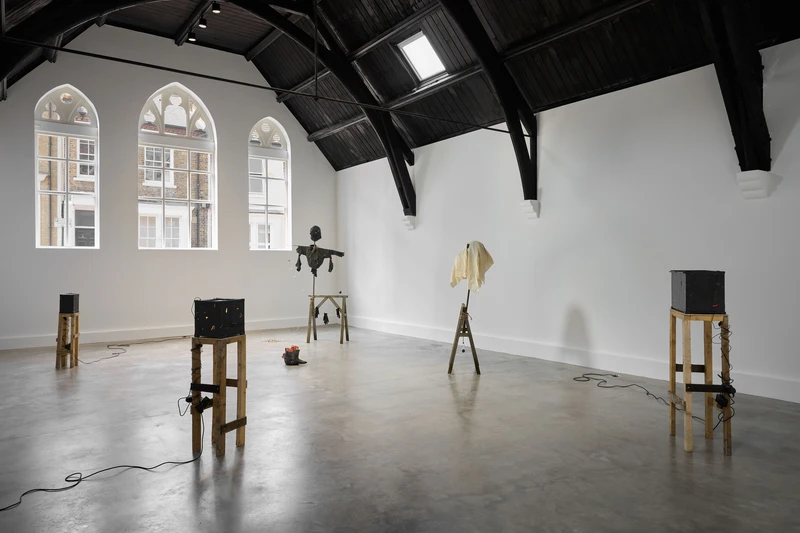Caspar Heinemann: Sod All
7 May-3 Aug 2025


Drawing from the aesthetics of folk art and vernacular architecture, Caspar Heinemann (b. 1994, London), explores the interconnectivity of spiritual, political and sexual countercultures.
The unifying concept for Heinemann’s new body of work is the word ‘sod’. The term has multiple applications, variously meaning the ground, the soil itself, or a person’s native ground. The artist has described how ‘sod’ can also refer to an unfortunate man, a gay man, a lucky man; used to express something difficult, or feelings of anger. In Biblical Hebrew, sod is an untranslatable word, often interpreted as ‘secret’, but also as meaning a council or circle, and the highest level of mystical interpretation. Such forms of linguistic play invite slippages between meaning and context.
In Sod All, Heinemann similarly harnesses narrative contradictions and layered associations by repurposing objects commonly used to attract or repel. Dead Ducks, 2025, suspends a flock of plastic duck decoys – used for both hunting and conservation purposes – mid-air and upside down. Similarly, the artist’s Scarers, 2025, sculptures are a strange hybrid of scarecrow and crow.
The diorama-like Time Machine, 2025, series comprises three tape bound reptile tanks that glow with coloured light, evoking intimacy, warning, warmth and sex. Exploring transformation and scale, the time machines encase vivarium ornaments that depict miniaturised tableaus of Greco-Roman ruins. Translating the slippages of wordplay into tangible forms, Heinemann complicates the gap between representation and the thing represented.
Much of Heinemann’s work is conspicuously hand-made, using materials such as paper, wood, rope and found objects which recall folk and craft aesthetics. Though employing a make-shift appearance, their precarious nature derives from the artist’s longstanding and personal engagement with folk revival, politics of land, mythology and spiritual histories.
In previous work, the artist’s subjects have evolved through speculative fiction, such as a revisionist biography of Ted Kaczynski, otherwise known as the Unabomber. He has referenced early Gay Liberation Front actions, Mary Whitehouse’s campaigns against homosexuality and the 1990s anti-roads movements in the UK. Developing these narratives across sculpture, performance, writing and drawing, Heinemann considers how queer storytelling might be channeled as a mode of opposition.
Heinemann’s exhibition follows an onsite production residency at Studio Voltaire in 2025. This is the artist’s first solo institutional exhibition in the UK.